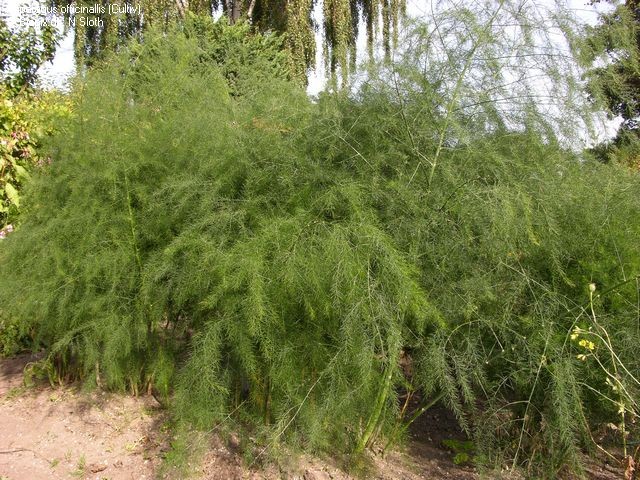Cochinchinese Asparagus - Asparagus cochinchinen

Common Names: Cochinchinese Asparagus, Tian Men Dong, Tian Dong, Chinese Asparagus, Asparagus cochinchinensis, Wild Asparagus Root, Shatavari (East Asian), Southern Asparagus, Asparagus Root, Asparagi Radix, Asparagus root (Latin origin)
Latin Name: Asparagus cochinchinensis
Origin: Asia
Short Introduction
Cochinchinese Asparagus thrives in light, medium, and heavy clay soils, but prefers dry, well-drained ground. Soil acidity is not a crucial factor, as it tolerates both acidic and alkaline conditions. It grows well in partial shade and even in full sun. This asparagus can also establish itself in coastal areas near the shore. It is easy to grow in garden settings; some growers recommend well-drained, humus-rich to sandy soil in a sunny location. According to several sources, it can withstand temperatures down to -15°C (5°F). Propagation is typically done by seed, ideally soaked in warm water for 12 hours before spring sowing. Seeds may germinate in 3–6 weeks at 25°C (77°F), with last autumn’s seeds being preferable. Once seedlings are large enough, they should be potted individually and kept indoors for the first winter. The following year, transplant them to their final position in late spring or early summer.
Detailed Description
Cochinchinese Asparagus has been used for thousands of years in Chinese medicine, with new uses still being discovered today.
Botanical Information
Cochinchinese Asparagus is a perennial plant that grows up to 1.5 meters tall. It blooms from March to June, and its seeds mature at the beginning of autumn, typically in September. The flowers are dioecious, meaning each plant has either female or male flowers. For fruiting, both male and female plants are needed, and pollination is usually carried out by insects—most commonly bees. Several plant parts are used therapeutically and culinarily. The rhizome, about 5 cm long and 2 cm wide, is cooked after removing the fibrous, bitter part, and the core is consumed. Some sources recommend soaking the rhizome core in sugar before eating. While some gardeners claim the berries are edible, other sources do not recommend eating asparagus berries.
Origin and Distribution
Cochinchinese Asparagus originates from East and Southeast Asia, with China, Japan, and Korea being primary regions. In the Czech Republic, only one asparagus species grows wild, the Common Asparagus. It usually thrives in warm regions, on dry hillsides, or in open scrubland, and is also purposely cultivated.
Usage / Dosage
Known in Traditional Chinese Medicine as Tian Men Dong, Cochinchinese Asparagus root has been used for centuries, particularly to address cold-related ailments and associated symptoms such as dry cough. Traditional Chinese Medical practitioners especially recommend its use during the acute phase of colds: it moisturizes the lungs, aids expectoration, dissolves mucus, alleviates dry mouth, and helps reduce fever or elevated temperatures.
During acute viral infections, it’s best employed within the first 3 to 5 days of illness, where it may shorten the duration and reduce symptom severity. TCM also uses Cochinchinese Asparagus to cool chest heat, support and nourish stomach yin, and clear heat from the stomach. It helps moisturize the digestive tract, relieve constipation, and slow intestinal transit. The root can also be used for chronic cough related to yin imbalance in the kidneys and lungs, sometimes in combination with other herbs for harmony. Additional indications from traditional practice include acute and subacute fevers, dizziness, tinnitus, knee and lower back pain, and kidney disorders.
The root also stimulates the parasympathetic nervous system, improves digestion, soothes the stomach, and supports saliva production, while also mildly strengthening the mind and calming neural transmission. It is included in Chinese herbal blends for sleep difficulties and stress-related symptoms. One major active compound is beta-sitosterol, which has been optimistically studied for its role in supporting prostate health and alleviating symptoms of benign prostatic hyperplasia. For centuries in East Asia, Cochinchinese Asparagus has also been used for male fertility concerns and, in cases of impotence, long-term and regular use is necessary.
Other notable constituents are flavonoids, particularly rutin and quercetin, which are potent antioxidants. In their pure forms, flavonoids are commonly used to strengthen vein walls in cases of deep vein inflammation, varicose veins, or hemorrhoids. Another important component, inulin, can help lower elevated cholesterol and is suitable for individuals suffering from constipation. Caution is advised for those prone to diarrhea, especially since Cochinchinese Asparagus encourages urination.
Cochinchinese Asparagus also contains compounds that may fight pathogenic bacteria by actively disrupting their cell structures. Preliminary results are promising, though more research is needed. Other studies look at its anti-inflammatory effects in joint capsules, suggesting benefits as a supportive ingredient during treatment of non-degenerative inflammatory joint diseases. It may also support healing processes. The root extract demonstrates mild antiseptic, expectorant, antipyretic, and tonic effects.
Active Compounds
Therapeutically useful parts of Cochinchinese Asparagus contain many bioactive substances, chief among them: asparagine, beta-sitosterol, flavonoids (such as rutin and quercetin), inulin, and others.
Traditional Dosage
Steep two heaping teaspoons of dried root (about 6 grams) in 200 ml of cold water, bring to a boil, and simmer for 30 minutes—taken once daily.
Fresh root can also be used in meals, or the powdered root may be taken: 2 heaping teaspoons (about 4–6 grams) once daily mixed in 150–200 ml of cold water, slowly brought to a boil for about 20 minutes, then consumed as is.
